Leah Remini’s new book is out “Troublemaker: Surviving Hollywood and Scientology.” And once gain people struggle to understand why anyone would join something as seemingly outlandish as Scientology. But the fact is that no one knowingly makes such a choice. Certainly not before the Web and social media made Scientology’s secrets so easily accessible. When Leah Remini entered Scientology as a child she simply believed what Scientology told her and what her mother encouraged her to accept.
That’s how “normal” people get tricked and trapped into groups called “cults” like Scientology. No one truly enters such an authoritarian high demand group with fully informed consent. Groups like Scientology deliberately withhold their secrets and refuse to let potential recruits fully understand how the group actually works, what it is really all about and what its ultimate demands might be. Remini reportedly gave millions of dollars to Scientology, but was only allowed to learn what Scientology was willing to share step-by-step per a price list.
There have been many young people brought into Scientology through family ties like Remini. This list includes the rocker Beck, actor Danny Masterson and Elvis’s daughter Lisa Marie Presley. People are often introduced to groups called “cults” by someone they trust.
It has been stated or implied that somehow the victims of Scientology are to blame in some way for their own victimization. They supposedly had “blind faith.” a personality flaw, deficiency or lack of judgement that ultimately led to their demise. Nothing could be further from the truth. And anyone who seriously researchers in any depth the process of Scientology’s recruitment and retention tactics can easily see this.
The initial TRs (training routines) in Scientology amount to little more than breaking people down, engendering dependency and submission rather than promoting some deeper understanding of anything to improve and empower people. As Scientologists move through this training and courses their dependency upon the organization is intentionally nurtured and grows until the typical Scientologist finds it difficult to make independent value judgements or critically think outside of Scientology’s closed system. That system becomes a kind of box of containment or mental prison.
Every Scientologist learns an internal group vocabulary of loaded language established by Scientology founder and former science fiction writer L. Ron Hubbard, which is filled with thought terminating clichés. This manipulative verbiage is an excellent example of what author George Orwell called “doublespeak” in his book “1984.” Scientology’s founder and its current leader David Miscavige could easily fulfill the role of Orwell’s character “Big Brother.” Scientology knowingly produces what can be seen as “blind faith” by confining and blinding people within its own alternate reality. Scientologists can essentially become mindless pawns manipulated by L. Ron Hubbard’s system and replicated to embrace his worldview.
Scientology’s organizational glue, which holds its adherents rigidly in place, is its ongoing check and countercheck system of enforcement that is implemented through a multi-layered organizational machine as conceived and constructed by L. Ron Hubbard. This operational machine includes key components such as auditing (enforced confession with the help of an e-meter that measures nervous tension ) coupled with the formation of files composed of personal information obtained through the auditing process and other sources such as “knowledge reports” from Scientologists (e.g. spouses, family, friends within Scientology). All of this ongoing policing is done by dedicated Scientologists performing their relegated roles within the Hubbard machine. This includes designated twins in training routines, auditors, course supervisors and ethics officers.
There is a kind of bullying and intimidation known as “handling” that goes on in Scientology. Having people handled is part of the policing process within Scientology and it is used to keep people under control. There are also substantial exit costs involved if a Scientologist considers leaving, which further reinforces control and silences dissent or critical questions. The exit costs of leaving Scientology can include the probability of being declared a PTS (potential trouble source) or worse an SP (suppressive person). Subsequently, the former Scientologist can be disconnected from family, friends and business associates. Instead of taking the risk of being so marked many Scientologists suffer in silence, suppressing their doubts and negative feelings about the organization. Some that cannot suppress their feelings sufficiently may find themselves facing a punitive process, which might ultimately put them in RPF (Rehabilitation Project Force) as punishment. Reportedly RPF can be a horrible experience that includes what can be seen as slave labor, personal humiliation, general degradation and at times brutal physical violence. These factors keep many Scientologists silent and trapped for many years.
Scientologists ultimately become bound by what Scientology calls its “technology” or its “tech,” which is essentially the L. Ron Hubbard proscribed way of being, thinking and feeling about everything.
The idea that anyone really chooses Scientology knowingly and stays happily without some level of coercion is simply a myth perpetuated by ignorance. It does not reflect detailed research and analysis about the deceptive recruitment and indoctrination process used by Scientology. Groups like Scientology are often quite deliberately deceptive and use coercive persuasion and influence techniques to gain advantage over people and control them.
 The Machiavellian way in which Hubbard designed the interlocking mechanisms of his Scientology machine represents whatever real “genius” the former science fiction writer possessed.
The Machiavellian way in which Hubbard designed the interlocking mechanisms of his Scientology machine represents whatever real “genius” the former science fiction writer possessed.
People placing blame on Scientology’s victims frequently say they should have noticed “red flags” or “warning signs” when they went through their recruitment and indoctrination process. Somehow common sense should have saved them.
But these notions again reflect a basic ignorance of how Scientology and other groups called “cults” really work. There are no red flags that are evident to people who have had their critical thinking and ability to make independent value judgements deliberately shut down by a group like Scientology. The training, auditing, courses and policing done within the organization effectively blinds people so that they cannot see the warning signs and their common sense is strategically short circuited by the group’s coercive persuasion tactics.
Individual accountability is only possible if people have the ability to genuinely reflect and critically evaluate a situation free of undue influence. People in groups called “cults” don’t truly regain their individual autonomy until after they leave the group and have effectively unplugged themselves from the system and exited the box that held them. After leaving the group environment and its control of information and communication former members can then begin an independent process of sorting through and unraveling their experience.
We are all vulnerable to persuasion. If this were not true there would be no advertising, political propaganda or money paid for celebrity endorsements. It’s wrong to blame or shame people for simply being human. We are all vulnerable to deception and manipulation. By accepting this reality we can better understand and recognize the tricks and traps used by destructive cults.
Groups called “cults” can be seen as a confidence game. But unlike the typical con man who moves on after his scam has succeeded–the cult leader keeps conning and exploiting the same people indefinitely.
Specifically focused education about the recruitment and retention tactics of groups called “cults” is a crucial factor in avoiding their con game.
Knowledge about coercive persuasion, influence techniques and corresponding behavior modification began decades ago through the research and published work of MIT professor Edgar Schein (1961), Harvard University instructor, researcher and medical doctor Robert Jay Lifton (1961) and UC Berkeley professor and clinical psychologist Margaret Singer (research and published work 1953-2001). Later, authors and communication experts Flo Conway and Jim Siegelman (“Snapping” 1978, “Holy Terror” 1982), ASU professor of psychology Robert Cialdini (“Influence” 1984) and sociologists Richard Ofshe (research and published work 1974-2000), Benjamin Zablocki (research and published work 1971-2001) and others significantly added to this growing body of research.
To better understand how the basic building blocks of coercive persuasion, thought reform and influence techniques work together to gain undue influence see the following:
“Cult Formation,” by Robert Jay Lifton, MD
“Thought Reform and Psychology of Totalism,” by Robert Jay Lifton, MD
“Coercive Persuasion and Attitude Change,” By Richard Ofshe, PhD
Six Basic Principles of Influence, from the book “Influence” by Robert Cialdini, PhD
“Thought Reform Programs and the Production of Psychiatric Casualties,” by Margaret Singer, PhD
Chart demonstrating distinctions between various forms of persuasion (education, advertising, propaganda, indoctrination and thought reform), by Margaret Singer, PhD
A list of persuasion techniques by Margaret Singer, PhD
Edgar Schein’s seminal book “Coercive Persuasion : A Socio-psychological Analysis of the ‘Brainwashing’ of American Civilian Prisoners by the Chinese Communists” (1961) and Conway and Siegelman’s classic “Snapping: America’s Epidemic of Sudden Personality Change” (1978) explain how people can be tricked and trapped through coercive persuasion and communication tactics.
Schein (1961) and Lifton (1961) established the foundation of coercive persuasion or thought reform and how it is used to shape and mold a predetermined and preferred mindset. Singer (research and published work 1953-2001) and Ofshe (research and published work 1974-2000) extensively explained how coercive persuasion and behavior modification worked within the process of cult indoctrination. Conway and Siegelman identified what they called “information disease” (1978), which is accomplished through the control of information and communication. They further described the role of “emotional control” in schemes of coercive persuasion within their second book “Holy Terror” (1982). Taken together this body of work explains how behavior modification, information control, thought reform and emotional control can function in tandem together as strategic tools used by authoritarian high demand groups called “cults” to effectively break people down and shape their consciousness for the purpose of exploitation through undue influence.
In his book (1961) about coercive persuasion Edgar Schein described this process in three basic stages, which he calls “unfreezing,” “changing” and then “refreezing” the person subjected to this process.
Scientology promises many things and presents itself in various forms, such as drug rehabilitation, study technology and other incarnations. Whatever works to draw people into the system Hubbard devised to break them down, force them to change and ultimately freeze them within his system. This process has hurt many people.
The key to freedom from Scientology is understanding and unraveling Hubbard’s system of control and breaking out of his machine.
Reading the writings of the previously listed authors can make a huge difference in the recovery process of any former member of a purported cult like Scientology. It allows the ex-member the ability to identify and unravel the specific programming done by the group, which has affected their thinking and feelings. Education is the key that unlocks the box.
My book “Cults Inside Out: How People Get In and Can Get Out” (2014) includes a detailed history of modern cults beginning with Charles Manson to groups called “cults” today. There are two chapters devoted exclusively to Scientology. One about the history of Scientology and another about a successful family intervention to get a 27-year member out of the group. The book explains what is commonly called “cult brainwashing” and identifies the nucleus for a definition of a destructive cult. My book is a synthesis of properly attributed and footnoted research regarding the coercive persuasion and influence techniques used by destructive cults to gain undue influence. There are more than 1,200 footnotes and an 18-page bibliography, which can help the reader delve more deeply into various aspects of the cult phenomenon. This is an important issue today as the world faces the violence of what President Obama has called an “apocalyptic cult” known as ISIS. Destructive cults have become a global concern.
What Scientology does has been done by many other groups called “cults” over the decades and it’s important to contextualize Scientology within that history.
Leah Remini has heroically managed to unplug herself from the L. Ron Hubbard machine. She has effectively left the box that once contained her and courageously shared her story to help others find their voice and follow in her footsteps. Remini can now communicate in her own words instead of the stilted verbiage once imposed upon her by Scientology. Remini is not being handled by Scientology and no longer needs to suppress her independent thinking. She is free to live her life without the fetters of Hubbard’s technology. Remini is also fortunate that she has managed to leave Scientology with her family intact.
Most former Scientologists to some extent and at some point beat themselves up over their past. They can be quite hard and self-critical about their time in Scientology. It serves no useful purpose and only compounds their pain to blame them or somehow imply that were in some way complicit in their own victimization.
In my opinion L. Ron Hubbard’s innate ability as a master manipulator was his real skill. Hubbard’s conception and construction of a relatively complex multi-layered control system to break people and keep them in silent submission was his ultimate achievement and the fact that this machine is still running today is Hubbard’s lasting legacy. The evil genius of this machine is that each of its individual parts is composed of people under the influence of Hubbard’s mindset dutifully performing their function to enforce Scientology control. The “brainwashed” unknowingly perpetuating Hubbard’s brand of “brainwashing.”
The Cult Education Institute has one of the largest archives of information about Scientology on the Web. This online database, which is a nonprofit public library, was initially launched in 1996 and continues to be added to and updated on an ongoing basis.
Hubbard made many claims. But apparently in the end Scientology was unable to save him from himself. He reportedly died isolated, medicated, estranged from family members and seemingly terrified of perceived dark forces. Ironically the life of L. Ron Hubbard ultimately disproved his self-improvement theories.
Again, it is vitally important not to shame or blame the victims of groups like Scientology. We must not indict them with accusations of “blind faith,” but rather question who systematically blinded them and endeavor to comprehend how this process was accomplished. Shame and blame must not become am impediment that former cult members are forced to overcome. No one who has endured a group like Scientology deserves such recrimination and treatment as they go through what is often a painful and challenging process of recovery.
authoritarian groups, brainwashing, cults, recovery



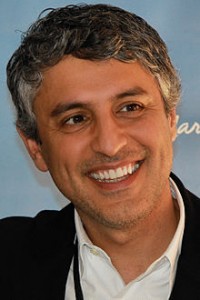
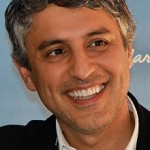



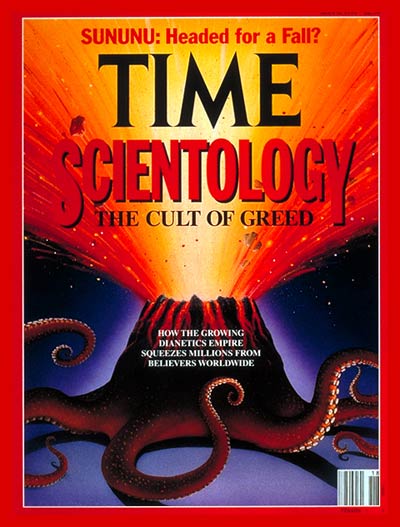
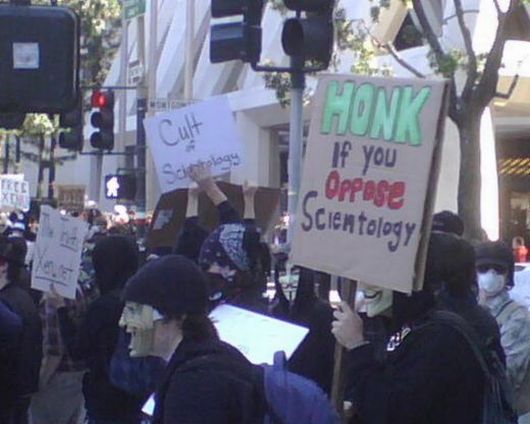


 And such “festive tales” are only told to Scientologists after they have paid for enough “religious services” to be properly prepared to hear them.
And such “festive tales” are only told to Scientologists after they have paid for enough “religious services” to be properly prepared to hear them. Perhaps the most appropriate “Christmas show” linked to Scientology is “A Very Merry Unauthorized Children’s Scientology Pageant” by
Perhaps the most appropriate “Christmas show” linked to Scientology is “A Very Merry Unauthorized Children’s Scientology Pageant” by  An Italian castle near Rome was rented out for the marital production that reportedly was budgeted at about $10 million, which is easily the going price for an independent film.
An Italian castle near Rome was rented out for the marital production that reportedly was budgeted at about $10 million, which is easily the going price for an independent film. Not exactly romantic, but maybe it is somehow spiritually fulfilling to bring the head of your church along to begin married life.
Not exactly romantic, but maybe it is somehow spiritually fulfilling to bring the head of your church along to begin married life. The successful dramatic series about two plastic surgeons in Florida has included Scientology as a recurring story line lately.
The successful dramatic series about two plastic surgeons in Florida has included Scientology as a recurring story line lately.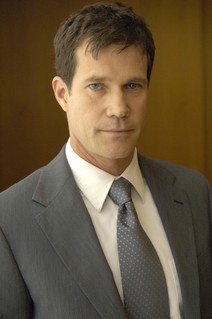 In the last episode it seems Sean actually thought so little of Scientology, he hired a “
In the last episode it seems Sean actually thought so little of Scientology, he hired a “